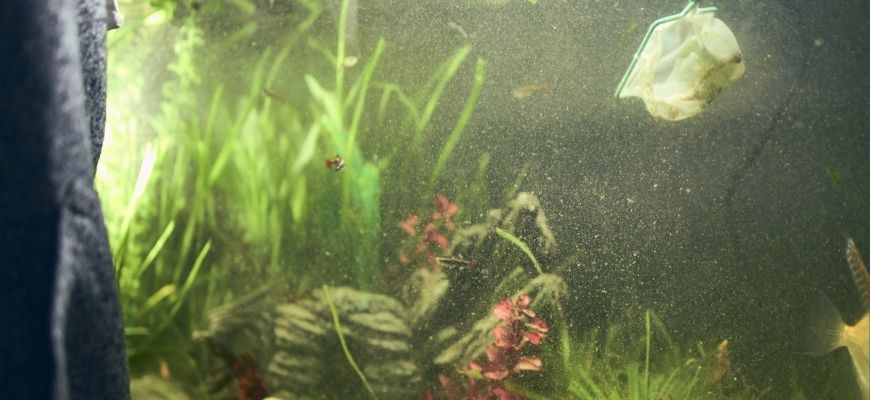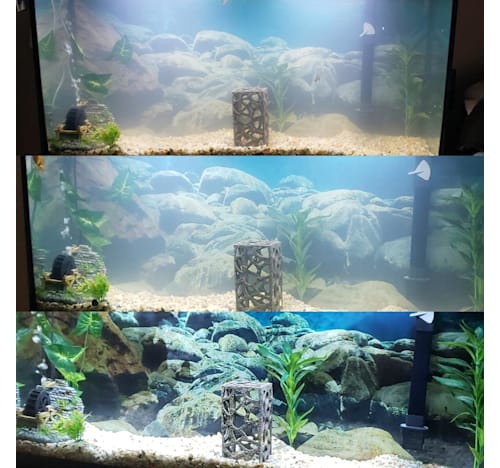Also make sure you use a bucket that has been selected for your tank maintenance only. If there are no corals or plants in the aquarium you can reduce lighting to just 6 hours per day to help in removing the algae.

Top Phosphate Removing Products For An Aquarium Aquarium Reef Aquarium Freshwater Aquarium
You can take a simple cloth or scrubbing pad to start the wiping of the glass.

How to remove silica from aquarium water. In lime softening the silica is co-precipitated along with magnesium present in the water or added if necessary. How to remove phosphates from aquarium water is what you are about to find out right now. How to remove silica from aquarium water.
Allow the clean rocks to soak for a while in the dechlorinated water. Aquaforest Phosphate minus is essentially GFO that has been rinsed to remove any fines and debrisPhosphate Minus will remove phosphates and silica from the aquarium leading to. Place a clean bucket near your aquarium and be sure the top of the bucket is below the bottom of the aquarium.
If you do want them gone decreasing silicates will have a effect. One of the most common methods of removing silica from drinking water is lime softening. Submerge the entire hose and tube into the aquarium water.
Just takes a little bit of work not. And its pretty easy. Ion exchange will remove this as long as the anion resin is the strong base type.
Swish the clean rocks around in the dechlorinated water. As mentioned diatoms are normal in a new saltwater tank and are easy to remove. Increasing the lighting will inhibit regrowth of brown algae.
Most likely they will go away on their own but. And the concentration of silicates in tap water can sometimes reach 40mg l. And since silicates can also be found in tap water they cannot be removed from the aquarium by water changes.
Substrate Silica sand It is possible that silicates are introduced to your tank from salt as well but the main sources are tap water and substrate. It can also be reduced by coagulation method such as in a clarifier system. Reverse osmosis will reduce both colloidal and reactive silica but proper pretreatment is necessary including oxidation of iron sulfur and manganese removal of chlorine and chloramine while hardness.
Its not an instantaneous fix and it will probably take a few months of being diligent but over time the diatoms will stop coming back as the silicates are removed. By themselves silicates are not dangerous in an aquarium but they have a profound effect on the appearance of diatoms. Remove Silica from Gravel.
Fill the empty bucket halfway with tap water and add the dechlorinator according to the labels instructions. Spectrapures SilicaBuster DI resin is speciifcally blended to remove silicates silica phosphates and nitrates. The best way of reducing silicates in your aquarium is through water changes where you scrape up and vacuum out as many of the diatoms as possible.
The silicates can come from the tap water and it is necessary to remove them. Removing silica from aquarium plants. Pour sufficient dechlorinated water into the bucket of clean aquarium rocks to cover it by a couple of inches.
Start from the top and clean the glass to the bottom by putting pressure on the pad. High temperature softening greatly improves silica removal. This shows how you can remove silicone from glass.
Something like PhosPure PhosBan or or Chemi-pure. You should do this in a single motion or else the algae bits will float in the water and set sail somewhere else in the tank. I agree on the silicates being a contributing factor in sponge growth I use NSW with naturally high silicates and get crazy sponge growth with numerous species dominanting all areas of the tank.
This type of algae does not adhere strongly to the tank surfaces and is easily wiped away. In some cases for very large flow rates you can remove silica with lime softening techniques. Hold the scrubbing pad and wipe the glass in a single stroke from top to bottom.
One of the fastest ways to get rid of phosphates in aquarium water is to do a partial water change. Clean the filters and change the water. This method is based on the reaction of calcium hydroxide lime with the silica colloids.
In order to keep your aquarium water free from silicates youll also have to remove silica from the aquarium plants. Chemical precipitation method can be used for dissolved and colloid silicates. Using a piece of cloth or scrubbing pad clean the aquarium glass.
There are 2 main sources of silicates in your tank. This water is free from nitrates and silicates. Colloidal silica has no ionic properties but has a relatively large size and can be effectively removed by fine mechanical methods like Ultrafiltration UF.
These products are marketed to remove phosphate but also remove silica. Vacuuming the gravel with a siphon will quickly remove coatings from the substrate. If the tank is stable then one option you might want to consider is purchasing some phosphate removing resins.
How to Use a Siphon Vac to Remove Brown Algae from Your Aquarium Gravel or Sand. You can do a 25 or even a 30 water change per week if there is way too much-dissolved phosphate in the water. The silica will wash away and get collected in the filter.
Reverse osmosis is also meant to target dissolved silicates. As they grow and join together the water in the aquarium will turn a rusty-brown color. If the silica is reactive silica then Reverse Osmosis is the most practical method to remove it from the water supply.
Take a water pipe with a hose and pour the water on the corals and other plants inside your aquarium. There are 2 forms of Silica in water colloidal silica and ionic silica. Stock a plecostomus or several otocinclus.
Diatoms are usually one of the first types of algae to grow in a new aquarium appearing on the glass and gravel. Removing Silica from the Substrate. Check the water from your tap to see if it contains silicates this is a common cause of brown algae.
Dont move the pad up and down. This can be done by using a. Using a bucket that has had a cleaning solution or soap in it can be fatal to your fish.
Do the same for all of the glass to remove silica from aquarium water and the glass. High-quality phosphate and silica removal media that can be used in a fluidized reactor for fresh and saltwater tanks. First it is important to clear silica from the glass.
One way of removing silica from the gravel is with the help of a vacuum. It will be removed to clean glass no residue.

How To Keep Crystal Clear Water In Your Aquarium Clean Fish Tank Water Youtube

Secret Guide How To Get Crystal Clear Aquarium Water Aquapros

Cloudy Betta Tank Different Colors Mean Different Causes Betta Source

How To Get Rid Of Cloudy Water In My Aquarium

Amazon Com Drtim S Aquatics Waste Away Natural Aquarium Cleaner For Reef And Nano Aquariums 16 Ounce Pet Seahorse Aquarium Nano Aquarium Beneficial Bacteria

Miniature Aquarium Fish Tank For A Dollhouse Wall 1 12 Scale Etsy Diy Resin Crafts Resin Crafts Miniature Aquarium

Why Is My Fish Tank Cloudy Tips To Fix Cloudy Aquarium Water

5 Alasan Mengapa Alga Mudah Tumbuh Di Akuarium Bali Reef Aquarium Online Store
Why Is My Fish Tank Cloudy Causes Solutions Petco

Automatic Cone Plastic Feeder Aquarium Tapered Fish Feeding Feeder Funnel Cup Fish Food Feed Tool With Suction In 2021 Automatic Fish Feeder Fish Feeder Feeding Tools

Seachem De Nitrate Filter Media Aquaponics System Aquarium Fresh Water

Secret Guide How To Get Crystal Clear Aquarium Water Aquapros

Seachem Purigen For Freshwater Saltwater Amazon Fresh Water Filters Aquarium Fish Tank

Secret Guide How To Get Crystal Clear Aquarium Water Aquapros

How To Get Rid Of Cloudy Aquarium Water The Aquarium Club

Api Phos Zorb Cartridge For Superclean 30 Aquarium Supplies Filters Aquarium Supplies Nitra Cartridges





Post a Comment